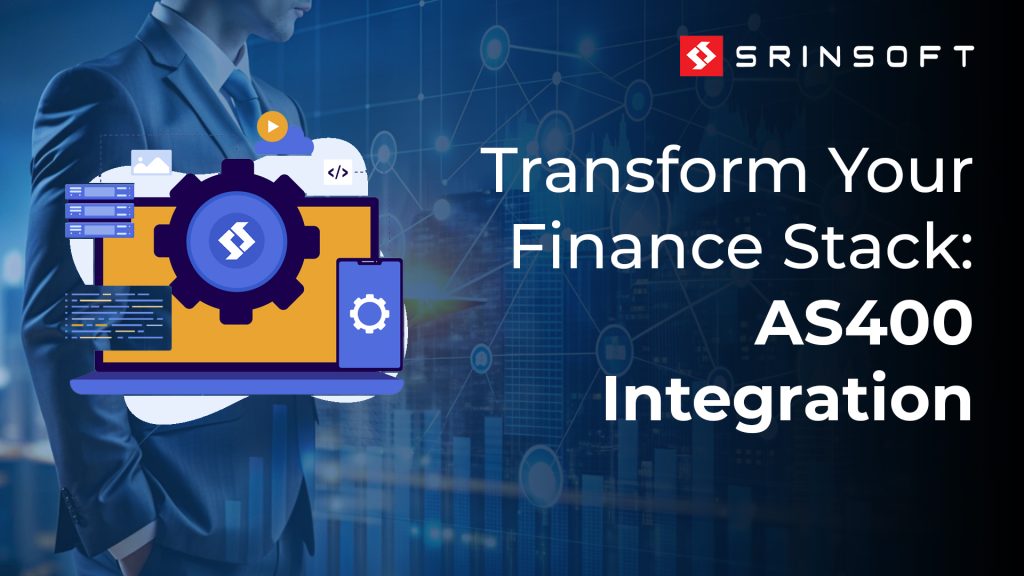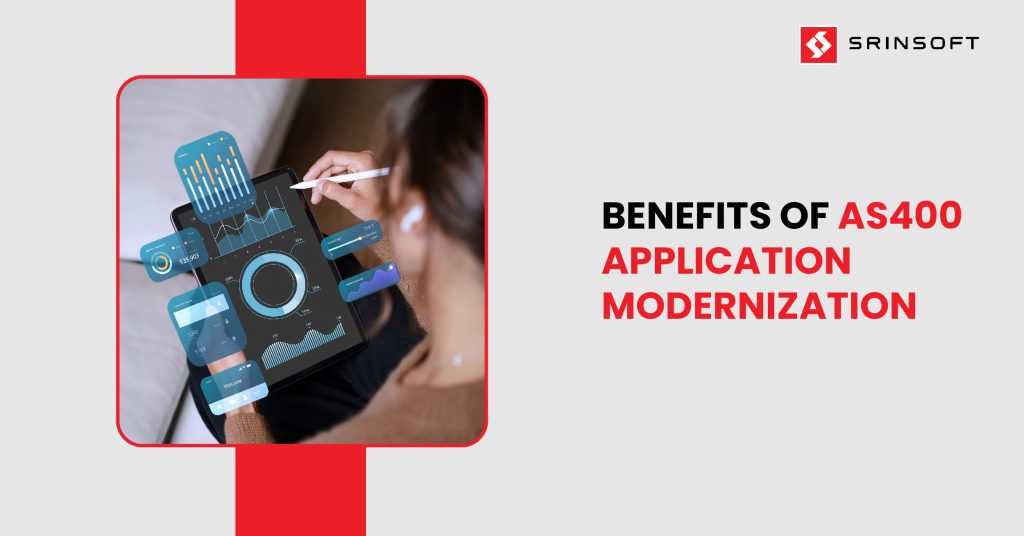
Fun Fact: Despite being labeled “legacy,” AS400 has long been the “life of the party” when it comes to accounting software. With 99.999% uptime, it’s the platform trusted by multi-billion-dollar Fortune 500 companies to close their books, reliably and efficiently.
Here’s the kicker: IBM i (also called AS400) can still run decades-old accounting programs unchanged—like an accountant still using a calculator from 1989; thanks to binary compatibility. But it doesn’t stop there. It also supports modern APIs, Python scripts, and real-time dashboards. Few platforms can bridge the past and the future seamlessly.
Integrating Makes Sense:
If your system already runs like clockwork, why reinvent the gears?
Accounting software is not just about posting invoices. For example, people casually say “then taxes,” as if that’s simple. But how well does a new developer really understand local, state, regional, and federal taxation; whether sales tax, VAT, payroll, motor fuels, or other regional requirements?
The existing, time-tested accounting ERP systems are the heart of your company’s operations. Over the years, they’ve been customized to match exactly how your business works. Switching to a new accounting system, along with all the connected “boundary” applications, can be costly and disrupt operations. Worst case? The new setup fails at something critical; imagine the system missing billing the customer entirely.
That’s where AS400 integration comes in, allowing companies to connect modern accounting platforms with the robust backend power of the AS400.
This blog will walk you through why the AS400 still matters in accounting, what you should consider before integration, how the process works, and how modernization and skilled developers keep it relevant for the future.
Why AS400 Is Still Relevant for Accounting Systems

Despite being labeled “legacy,” the AS400 system continues to power business operations in industries where downtime isn’t an option, and switching could cost millions of dollars and require 3x your current staff. Here’s why it remains a top choice for accounting:
- Reliability and Scalability
One thing accountants hate is learning new software for general day-to-day operations. Whether processing thousands of transactions per second or managing complex ledger reconciliations, AS400 platforms perform consistently without crashing or slowing down.
- Legacy Support for Financial Applications
Many enterprise accounting applications were born on the AS400 and have been balancing the books since dial-up internet was a thing. Decades later, they’re still closing periods, reconciling ledgers, and posting journal entries without a single “system crash variance;” no costly rewrites, just steady accruals of reliability.
- Compatibility Through Modernization
With AS400 modernization, you can finally get your “legacy ledger” to integrate with modern tools like QuickBooks Enterprise, Sage Intacct, or a custom-built GL masterpiece. Thanks to APIs, middleware, and web services, your AS400 can now post journal entries in the cloud without feeling like it’s balancing the books on an abacus.
Isn’t it remarkable when a system can seamlessly connect the best of the past with the innovations of the future?
Key Considerations Before Integration
Before starting an AS400 integration project, define your roadmap; think of it as balancing your project’s trial balance before you post a single transaction. Rushing in without a proper audit, and you could end up with data imbalance, systems in the red, and compliance penalties you can’t write off.
Assess Current Infrastructure and Needs
Start with a full audit of your AS400 (IBM i) environment and accounting workflows. Identify:
- Modules in scope; Account Payables (AP), Account Receivables (AR), GL, payroll, and any industry-specific functions.
- Current pain points; slow reporting, manual reconciliations, limited integration with cloud apps, etc.
- Scalability goals; support for remote access, API connectivity, real-time dashboards, and future cloud or hybrid deployments.
- Map Integration Points and Data Flows —Document how your AS400 interacts with other systems — both on-premises and in the cloud.
Identify Compatible Accounting Software
Not all accounting platforms integrate seamlessly with IBM i. Prioritize solutions that offer:
- Robust APIs or pre-built IBM i connectors for real-time, bi-directional data sync.
- A proven track record of AS400 (IBM i) deployments in similar industries.
- Vendor support for hybrid and cloud environments, including SaaS add-ons and secure remote access.
Address Security and Compliance
Accounting systems process highly sensitive financial data, whether hosted on-prem, in the cloud, or in a hybrid setup. Ensure your integration meets:
- Industry-specific compliance; SOX, GDPR, PCI DSS, and any local financial regulations.
- Modern encryption standards; end-to-end encryption for data in transit and strong encryption at rest.
- Granular access controls; role-based permissions, MFA, and comprehensive audit trails for all user activity.
Use AS400 Managed Services
AS400 (IBM i) managed services providers offer expertise in both infrastructure and application-level integration; across on-prem, hybrid, and cloud-connected environments. They can:
- Plan and execute migrations or modernizations with minimal downtime.
- Establish secure communication channels; VPN, encrypted APIs, and cloud gateways.
- Integrate with modern platforms like cloud-based BI, ERP extensions, and payment processors.
- Continuously monitor and optimize performance post-implementation, using real-time analytics and proactive alerts.
AS400 Integration Process for Accounting Software

Let’s break down the AS400 integration process into practical (and slightly less boring) steps.
Step 1: Requirements Gathering
This is your project’s “opening balance.” Sit down with both finance and IT before you post a single transaction. Define:
- Data fields to be synced, so you don’t end up reconciling ghosts in your general ledger.
- Transaction volume, because processing 10 invoices a day is very different from closing the books.
- Reporting formats; PDFs, CSVs, or those “export-to-Excel” files that can sometimes disrupt data integrity or formulas.
- Integration frequency; real-time (instant posting) vs. batch (a nightly journal entry run).
Step 2: Data Mapping and Migration
Data mapping is like reconciling your books, every field in your accounting software has to balance perfectly with its AS400 counterpart. Think:
- GL account codes in AS400 → Chart of Accounts in the new system
- Vendor IDs → Supplier database
- And just like you wouldn’t carry forward a suspense account, cleanse your data before migration to clear out duplicates and write off those “bad debts” of outdated records.
Step 3: API or Middleware Setup
Think of this step like setting up interpreters at a meeting — your AS400 speaks one language, your new accounting software speaks another, and the middleware makes sure they actually get what the other is saying. Integration can happen through:
- Native APIs; the “official interpreters” built right into the accounting software.
- Middleware solutions; like MuleSoft, IBM DataStage, or custom-built connectors, acting as friendly middlemen who keep both sides from throwing spreadsheets at each other.
- Direct database integration; ODBC/JDBC for certain platforms, a bit like passing secret notes in class (securely, of course).
Step 4: Testing and Validation
- Before you hit “Go Live,” treat your integration like a new hire — make sure it can actually do the job before giving it the keys to the vault.
- Test data flows in a sandbox; break things here, not in production.
- Validate reports and reconciliations, because “close enough” does not work in accounting.
- Run both systems in parallel, like training wheels for your ERP, until you’re sure it won’t steer you into a financial ditch.
Step 5: Deployment and Monitoring
- Once everything checks out, it’s launch time but keep the safety net handy.
- Deploy the integration in production, carefully monitored to ensure smooth operation during the initial rollout phase
- Monitor logs for errors, because even “perfect” code sometimes wakes up cranky.
- Train end-users, so they don’t call IT every time a button moves.
- Plan for common challenges, incompatible data formats, latency issues… all the fun stuff that’s less fun without a pre-integration audit.
Modernizing AS400 for Accounting Efficiency

Modernization isn’t about replacing your AS400; it’s about taking your perfectly balanced trial balance and giving it a turbo boost.
- Upgrading Legacy Systems: Moving to the latest IBM i OS is like adjusting your depreciation schedule; you get more value out of the same asset. Expect faster performance, tighter security, and smoother integration with the rest of your tech ledger.
- Incorporating Cloud-Based Accounting Platforms: Think of this as adding an off-balance-sheet asset: anywhere access, automated updates, and scalable computing power, without overburdening your fixed assets column.
- Using Modern Interfaces and Dashboards: Ditch the green-screen interface and get dashboards that turn raw debits and credits into visual statements.
Role of AS400 RPG Developers in Integration Projects
An AS400 RPG developer isn’t just maintaining legacy code; they’re shaping the next generation of accounting automation on IBM i.
- Custom Module Development: A multinational shipping company launches a subscription-based billing model with complex, usage-based pricing. The RPG developer creates a custom accounting module that automatically calculates charges based on IoT sensor data from cargo containers, posts journal entries in real time, and generates multilingual invoices tailored to regional tax laws, all without manual intervention.
- Optimizing RPG Code: A global retailer needs to close its books daily instead of monthly to support AI-driven demand forecasting. The RPG developer refactors legacy batch programs into near-real-time transaction processing, cutting end-of-day reconciliations from four hours to under fifteen minutes, enabling the CFO’s dashboard to show live P&L positions by store and region.
- Collaboration Between Teams: A fintech startup acquires an IBM i–based accounting platform and wants to offer automated compliance reporting to clients in multiple jurisdictions. The RPG developer partners with the finance team to:
- Build AI-assisted audit logs that flag anomalies instantly.
- Integrate with blockchain-based tax filing systems to push VAT submissions directly to government portals.
- Automate custom KPI dashboards for each client, accessible securely from any device.
Benefits of AS400-Integrated Accounting Systems
Integrating accounting software with IBM i isn’t just about keeping the lights on; it’s about opening doors to capabilities that may soon be standard. Look at these scenarios:
- Real-Time Financial Reporting: A renewable energy company runs wind farms across multiple continents. Each turbine has sensors tracking power output, maintenance costs, and weather conditions. This data flows straight into the IBM i accounting system, so finance teams can instantly see profitability per turbine, even adjusting forecasts on the fly when wind speeds drop.
- Streamlined Operations: An agribusiness uses AI-powered OCR and IBM i integration to process supplier invoices as soon as they hit the shared email inbox. The system auto-matches them against purchase orders, posts them to the correct GL accounts, and schedules payment, with the CFO receiving an automated exception report only if anomalies are detected.
- Cost Efficiency: A regional bank avoids a risky ERP rip-and-replace by layering a cloud-based loan accounting app onto its IBM i core. The integration uses APIs to sync transaction data in real time, enabling modern digital loan servicing without disrupting the AS400’s proven GL and compliance processes.
- Futureproofing: A manufacturing company adds a predictive analytics module that runs in the cloud but draws transactional data from IBM i. The system forecasts cash flow six months ahead, flags potential liquidity crunches, and even suggests financing options, all while running on the same IBM i environment that’s been closing the books for decades.
Conclusion
Think of the AS400 as the reliable side of your enterprise’s financial story, perfectly balanced, always reliable, and never out of reconciliation. By integrating a modern accounting software, you can post fresh efficiencies to your operational ledger without writing off the decades of stability you’ve banked on.
Whether you’re closing the books on outdated workflows, amortizing technical debt through modernization, or calling in AS400 RPG developers to balance the integration journal, partnering with professionals like SrinSoft ensures a clean audit trail into the future.
If your goal is to maximize your system’s ROI and keep your assets liquid (and your liabilities minimal), now’s the time to invest in modernization and managed services. Done right, your AS400 will keep producing financial statements so accurate they could withstand the scrutiny of the toughest auditor.
Let SrinSoft help you reconcile innovation with reliability; fill the form and contact us today to start your AS400 modernization journey.
Frequently Asked Questions
Why use AS400 for accounting?
It’s reliable, scalable, and runs legacy and modern apps seamlessly.
Can AS400 connect to cloud accounting software?
Yes, through APIs and middleware for real-time data sync.
What are the integration steps?
Gather requirements, map data, set up APIs, test, and deploy.
What do RPG developers do?
They customize code and optimize processes for real-time accounting.
How can SrinSoft assist?
SrinSoft provides expert AS400 modernization and integration services.







